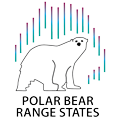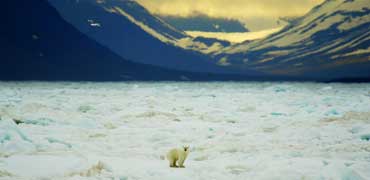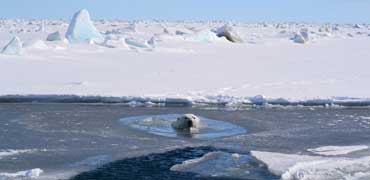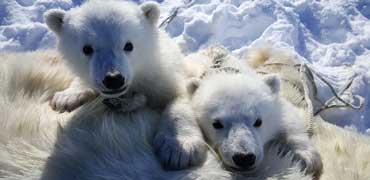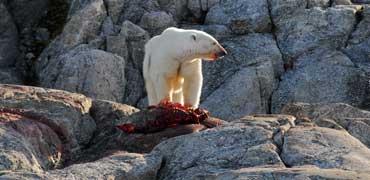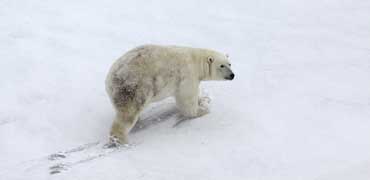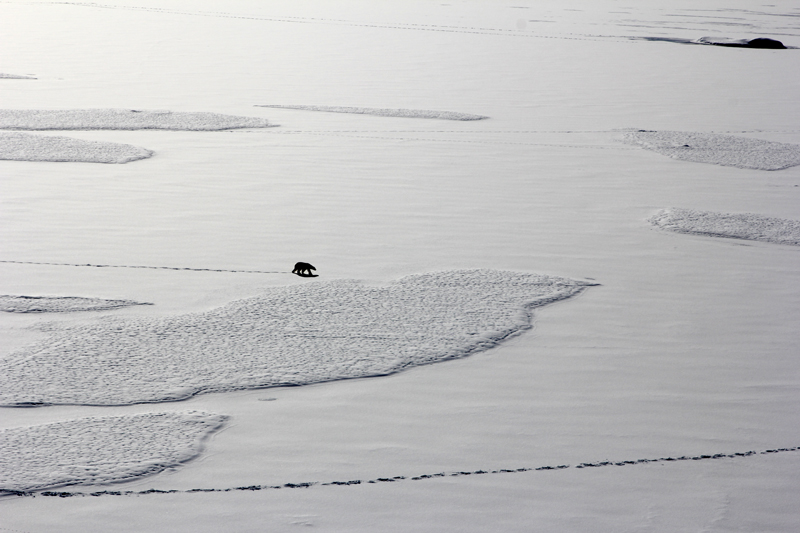 Photo credit: Kristin LaidreThe length and frequency of seasonal movements undertaken by bears within subpopulations vary according to the attributes of the geographic area occupied—that is, the availability of features such as land masses, multi-year ice and polynyas—and the annual pattern of freezing and break-up of the sea ice.
Photo credit: Kristin LaidreThe length and frequency of seasonal movements undertaken by bears within subpopulations vary according to the attributes of the geographic area occupied—that is, the availability of features such as land masses, multi-year ice and polynyas—and the annual pattern of freezing and break-up of the sea ice.
Data from satellite telemetry transmitters on female polar bears have shown that they do not wander aimlessly, but that their movements and distribution are determined by the way they use the sea ice habitat as a platform for feeding, mating, denning and, in some subpopulations, summer retreat areas. Photo credit: Morten Ekker They tend to move on drifting ice to remain in productive habitats (e.g., over the continental shelf where seals are abundant), which often means moving against the direction of drift of the sea ice to remain in the same general geographic location.
Photo credit: Morten Ekker They tend to move on drifting ice to remain in productive habitats (e.g., over the continental shelf where seals are abundant), which often means moving against the direction of drift of the sea ice to remain in the same general geographic location.
Source: Circumpolar Action Plan
